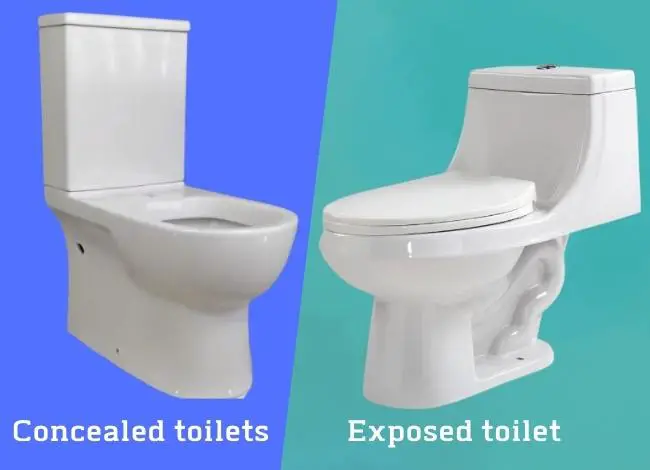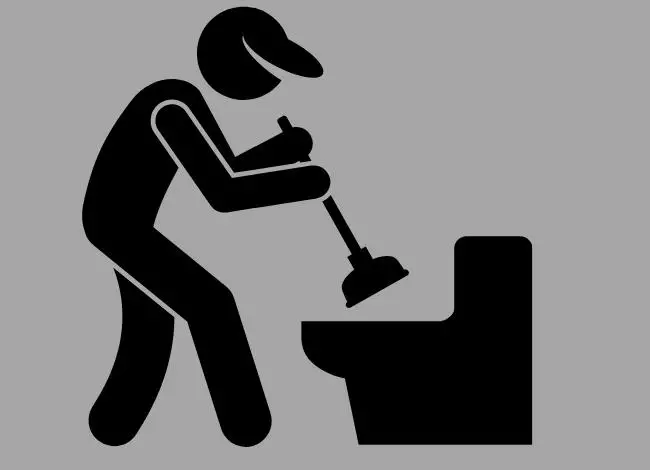What is a trapway on a toilet?
One of the prime things that should be considered while buying a toilet is the size and design of the trapways. The trapway is the S or P-shaped pipe that gallops all the waste you flush in the toilet and sends them to the septic tank or any other reservoir you have. In simple words, the main goal of a trapway is to flush the waste into your toilet’s drainage and plumbing system. There are huge types and sizes of trapway available in the market, so you must be prudent in selecting the most suitable and aesthetic one for your bathroom ambiance.
What is a concealed trapway?
The concealed trapway is one of the finest inventions in the arena of trapways. A concealed trapway means there is no S-shaped visual pipeline around the toilet, but that trapway is sealed behind a smooth surface. Most people consider a concealed trapway toilet because it is easy to clean as there is an awkward bent at the surface of the toilet.
Recommended Skirted Trapway- WOODBRIDGE Modern Toilet
Bowl Shape: Elongated
Type: Both one and two-piece available
Flush: Dual
Water consumption: 1.28 GPF
Rough-in: 12 inches
Height: 15.5-16.5 inches
MaP Score: 1000 gram
Flush button: Chrome finish
Seat: Soft-closing (included)
Clog-free: Yes
Flushing system: Siphon jet
All About the Exposed Trapway Toilet
An exposed trapway is just the opposite thing as a concealed trapway toilet. In this type of toilet, you can see the visual S-shaped trapways behind the toilet. It is all about aesthetic beauty; the curvature of the exposed trapway toilet adds a new dimension of wonderful belongings to it.
But on the contrary, there are some bad sides to this toilet, like the exposed trapway is very tough to clean as there are so many bends and awkward lines where dust, germ, and bacteria build easily.
Skirted vs. Exposed Toilet Trapway Comparison:
| Point of comparisons | Skirted/Concealed Trapways | Exposed Trapways |
| Key Difference: | The trapways are concealed behind a smooth portion behind the toilet. | The S-shaped trapways are visible, and it looks super natural. |
| Cost: | A little bit costlier than the exposed trapways | Less costly |
| Position of the bolts: | The nuts and bolts have a separate confined chamber where they can position themselves without being revealed. | The bolts and bolt caps are visible to normal vision |
| Cleaning and maintenance: | It is really simple to clean as there is no added curvy design. | Difficult to clean because of bends. |
| Microorganism Attack: | Less prone to growing germs and bacteria. | The visible curvy trapways are vulnerable to catching germs, molds and mildew, and bacteria. |
What is better, a 4″ trapway or a 2″ trapway for a toilet?
In a typical outlook, we always prefer the more significant and broader trapways because that will allow more waste to flow through it, and thus it is less prone to clogs. But the case is not always the same as the wider trapways lessen the pressure of the waste as there is ample space available in a 4″ diameter trapway. On the other hand, the 2″ diameter trapways are used in conventional toilets. Still, they cannot handle the amount of waste that the 4″ diameter trapways do, But the pressure created by the waste and liquid is almost double that of the 4″ diameter trapway. If you are seeking suggestions on which one is the best, then I must suggest that the 4″ diameter trapway is far better than the other one because it can pass more waste than the 2″ diameter trapway toilets.
Does toilet Trapway size matter?
Size always matters; if that is the size of the trapway, it is an obvious consideration when buying a toilet. Generally, a wide trapway can fit into more waste than a narrow-fitted trapway. Most toilets use a 2″ diameter trapway, which is more than enough for dumping the waste. But if you can manage a bigger trapway than the 2″ diameter trapway, it will reduce the chance of clogging the toilet.
What is the standard toilet trapway size?
There is a standard dimension of the trapways set by the authority. Most common trapways are roughly 2 inches wide and come with a 3-inch flush valve. But you can have trapways that are 2-1/8 to 2-3/8″ wide. Trapways must not be more significant than this in your home toilets. In some public toilets, authorities use even 3 to 4 inches of trapways to accommodate vast waste, but that is in exceptional cases.
How to Unclog a Toilet Trapway?
There are tons of ways to unclog a Toilet Trapway. Your toilet clogs when you flush more extensive wastes or foreign objects that cannot dissolve in water. You need to know some life hacks to unclog the trapways in easy steps.
Using the plunger
Take a beehive plunger and plunge several times. In a push-pull motion, the plunging action forces water in both directions in the drain to loosen the clog. For sealing around the cup, you must position the plunger in a slight angle motion for a better result. After plunging, apply a force of water to clear the trapway. 
Using the auger or snake
The auger or snake is another tremendous gadget for unclogging the trapways of the toilets. You need to insert the main cable in the trapway and gently rotate and keep cranking and pushing the cable until the handle contacts the tube, and the cable can go no further. 
Apply the mixture of vinegar and borax
Strong toilet cleaners or a mixture of vinegar and borax can play a vital role in removing the clogs in the trapways. Just pour them into the toilet bowl and wait for some time. After a while, rinse and flush the toilet. This will remove all the clogs from the trapways.
Hi, this is Robert Crossan, the owner of this website, has 17 years of experience in the installation, maintenance, and repair of toilets and plumbing systems. After completing the Level 2 Basic Plumbing course in 2005, I started working in both domestic and commercial buildings as a professional plumber. So I can figure out the core difference between different toilet models and brands. It also helped me monitor their work performance and setbacks.
